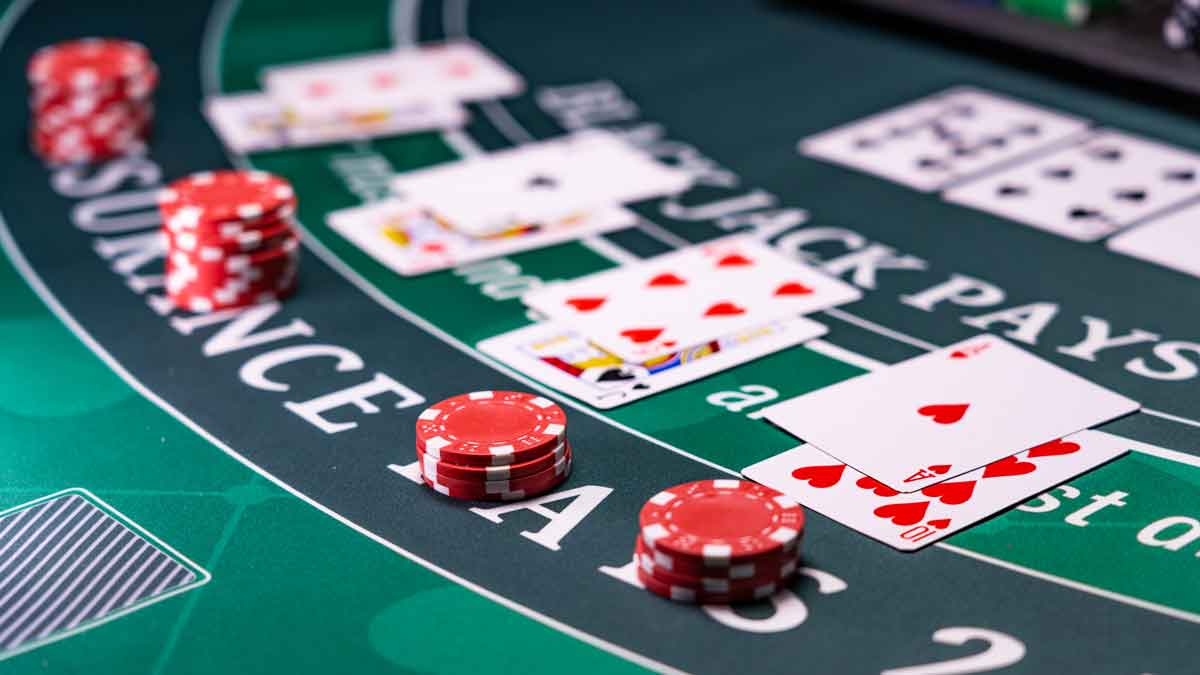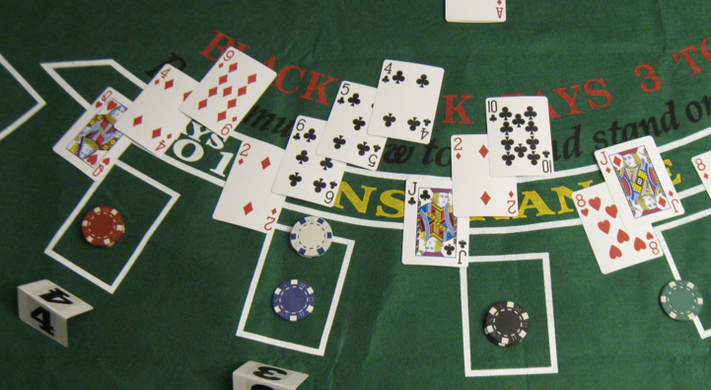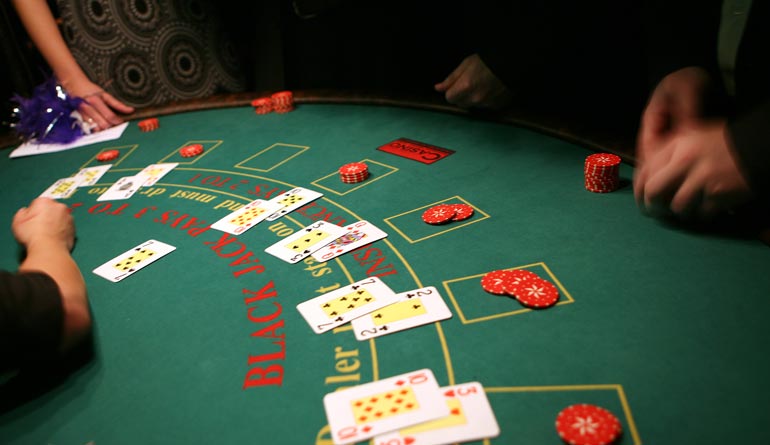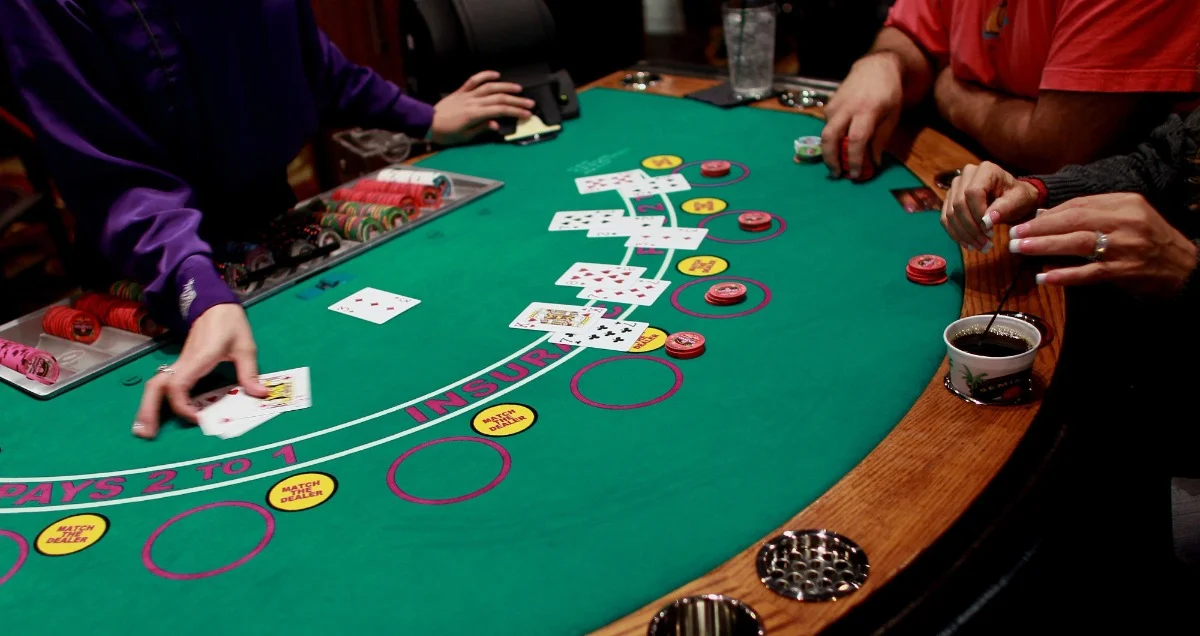Blackjack Strategy | Blackjack players often employ a basic playing strategy to tip the odds in their favor, reducing the house edge to under 1%, though the exact outcome depends on the rules in play. While many players grasp the logic behind most basic strategy decisions, such as standing on a 16 when the dealer’s upcard is a 6, some aspects remain less apparent. In this article, we delve into four counterintuitive hands and explore the rationale behind these less conventional plays.
Double Down Courageously: 6-5 vs. Dealer’s 10

A common situation arises when a player holds a 6-5 combination against a dealer’s 10. Basic strategy dictates doubling down on an 11 against a dealer’s 10. However, players often hesitate, fearing the dealer may have a pat 20. But here’s an intriguing revelation: when the dealer reveals a 10 upcard (without a blackjack), they end up with a 20 approximately 33% of the time.
Conversely, a player wielding an 11 and opting to double down has roughly a 31% chance of hitting 21 (drawing a 10) and an 8% chance of achieving 20 (drawing a nine). Surprisingly, you are more likely to reach 20 or 21 with a one-card draw than the dealer is to hit a 20. Additionally, even if you draw a 7, 8, 9, or 10, and the dealer has the same card in the hole, you still win. While doubling slightly reduces your winning chances, the increased wager leads to more significant monetary gains.
Blackjack Strategy – Splitting Wisdom: 8-8 vs. Dealer’s 10

Here’s an intriguing comparison: playing two 8s against a dealer’s 10 can be more financially advantageous than hitting once with a 16. When you hit on a 16 against a dealer’s 10, you win only about 23% of the time and lose 77%, resulting in approximately four wins out of every 17 hands—a dire scenario.
However, when your 16 consists of a pair of 8s, splitting offers a lifeline. With splitting, your chances of winning when you start each hand with a single 8 against a 10 improve to 38%. Both hitting and splitting entail losses, but winning 38 hands and losing 62 by splitting is more cost-effective than winning 23 hands and losing 77 once by hitting. The math backs this up convincingly.
<Blackjack Strategy – When is the right time to split?>
The Power of Aggression: 9-9 vs. Dealer’s 9

While splitting a pair of 9s against a dealer’s small card may seem logical, it might appear counterintuitive to split 9s against a dealer’s 9 and opt for the “strong” 18. However, an 18 only prevails against a dealer’s 9 in eight out of 20 scenarios. In contrast, you win nearly half the time with a 9 facing a dealer’s 9 (9.5 out of 20 hands). To approach a break-even point on this hand, it’s crucial to embrace aggression and choose the split. Moreover, if resplitting and doubling after splitting are allowed, you gain an extra opportunity to double down on 11, as demonstrated in our previous example, when you draw a deuce to any of your 9s.
Blackjack Strategy – Breaking the Mold: 10-2 vs. Dealer’s 3

Conventionally, players are advised not to risk busting their hands when the dealer shows a weak upcard. However, this advice doesn’t hold true when holding a 12 against a dealer’s 3. Consider that only four cards can bust your 12 (a 10, jack, queen, or king), while five cards will lead you to a safe zone of 17-21 (a five, six, seven, eight, or nine).
Furthermore, the dealer’s 3 upcard, though seemingly weak, isn’t as vulnerable as, say, a 4, 5, or 6 upcard, as the dealer is less likely to bust with a 3. Hence, you incur a slightly lower loss (about 2%) by hitting a 12 against a 3 compared to standing.
By adopting these unconventional plays and understanding the reasoning behind them, blackjack players can enhance their strategic approach and increase their chances of success at the tables.



